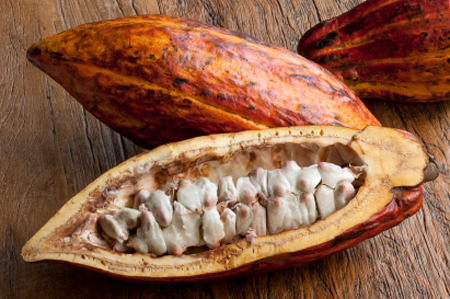El Nino Throws Off Cocoa Traders as African Crop Views Split
Category: Cocoa
 (Bloomberg) – The strongest El Nino in almost two decades is dividing cocoa traders.
(Bloomberg) – The strongest El Nino in almost two decades is dividing cocoa traders.
While most agree the weather pattern will hurt production in West Africa, which provides about 70 percent of global supplies, the extent of the impact has become a question in the market. Estimates for the balance for the season starting next month range from a surplus of 92,000 metric tons to a deficit of 297,000 tons, according to a Bloomberg survey of 14 traders, brokers and analysts.
El Nino will be the strongest since 1997-98 and peak around the end of the year, according to Australia’s Bureau of Meteorology. Estimating the effect of the weather pattern on West African crops is hard because it usually affects the smaller of two annual harvests the most, said Jonathan Parkman, co-head of agriculture at futures and options brokerage Marex Spectron Group. In Ivory Coast, that crop usually starts in April.
“In El Nino years, it’s the mid-crops that bear the brunt of thenegative weather impacts and at the moment, we have no idea what the mid-crops will look like,” Parkman said by phone from London. “We’ve been talking about El Nino for seven months, but it’s only now starting to have a significant effect.”
Cocoa Rally
Speculation about a smaller harvest has given cocoa a 14 percent advance this year. The chocolate-making ingredient for December delivery was little changed at $3,312 a ton by the close on ICE Futures U.S. in New York Tuesday.
Forecasts for the cocoa crop in Ivory Coast, the world’s largest producer, vary by as much as 200,000 tons and by 150,000 tons for Ghana, the No. 2 grower, the survey showed.
Cocoa supplies will fall short of demand by 60,000 tons in the 2015-16 season, a second year of deficit, according to the mean in the Bloomberg survey and data from the London-basedInternational Cocoa Organization. Dry weather in West Africa and damage from El Nino will lead to a global shortage of 100,000 tons, Simeon K. Ehui, regional manager for agriculture at the World Bank, said by e-mail from Abidjan Thursday. Ten out of 14 respondents in the Bloomberg survey forecast shortages.
Global Output
El Nino reduces global cocoa production by an average 2.4 percent, with Ecuador being the most affected country, according to an ICCO study. In West Africa, El Nino causes output to decline by about 2 percent in Ivory Coast and by 1.7 percent in Ghana.
“If we see demand continue to increase while El Nino impacts supplies through dry weather in the Ivory Coast, you could really see the price of cocoa futures rise,” said Lara Magnusen, a La Jolla, California-based portfolio manager at Altegris Investments Inc., which oversees $2.65 billion.
Farmers in Ivory Coast will harvest 1.66 million tons, with estimates varying from 1.55 million and 1.75 million, according to the mean of 11 answers provided. Output in Ghana will be 803,000 tons, with views ranging from 700,000 to 850,000 tons, the mean of 12 responses received showed.
The ICCO estimates Ivorian production at 1.76 million tons in the 2014-15 season and Ghana’s at 720,000, the group said Sept. 22.
Demand Division
Traders are also divided on demand, with forecasts for cocoa processing provided by 13 respondents varying between an increase of 3.7 percent and a decline of 3 percent. While slowing emerging-market economies may hurt demand, according toHector Galvan, a senior broker at RJO Futures in Chicago, rising prices for cocoa butter, a key ingredient to make chocolate, signal demand is better than grinding figures indicate, Parkman said.
While cocoa processing declined in North America and Asia in the second quarter, and was little changed in Europe, the cost of cocoa butter relative to bean prices rose to the highest since March, according to KnowledgeCharts, a unit of Commodities Risk Analysis. Eleven of 13 respondents in the Bloomberg survey forecast a rise in demand, with a mean showing a 1 percent increase.
“If you look at what’s happened to butter and powder markets, that provides clear evidence that the underlying pace of consumption is running ahead of grindings,” Parkman said. “Provided chocolate consumption doesn’t continue to deteriorate, grindings will have to grow about 2 percent to match current demand.”

